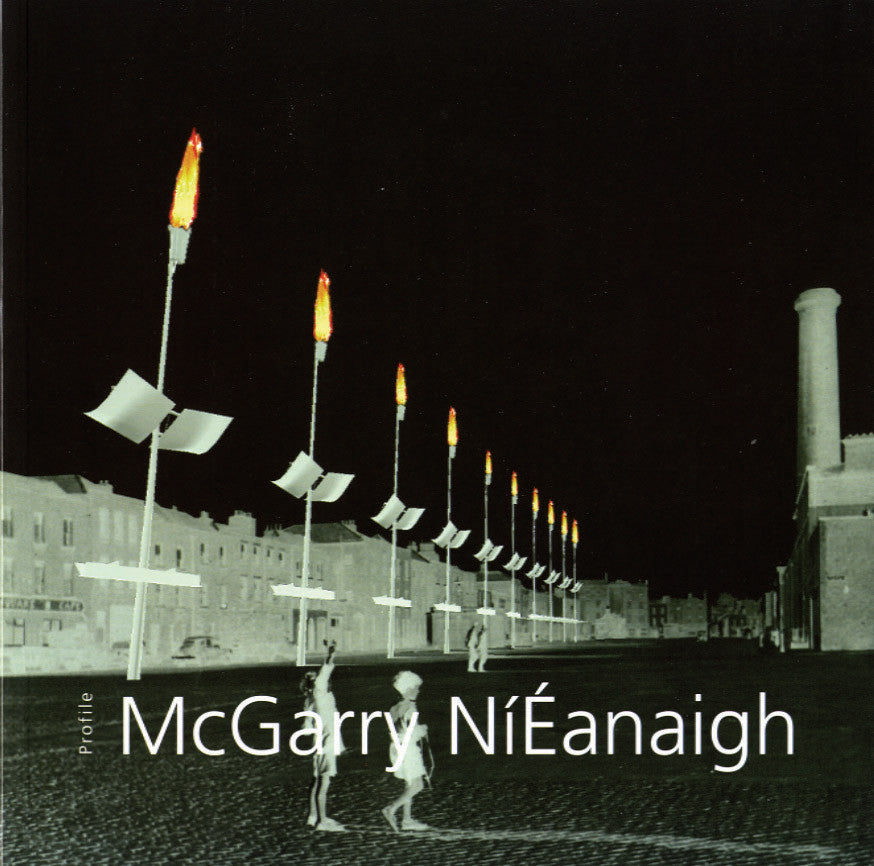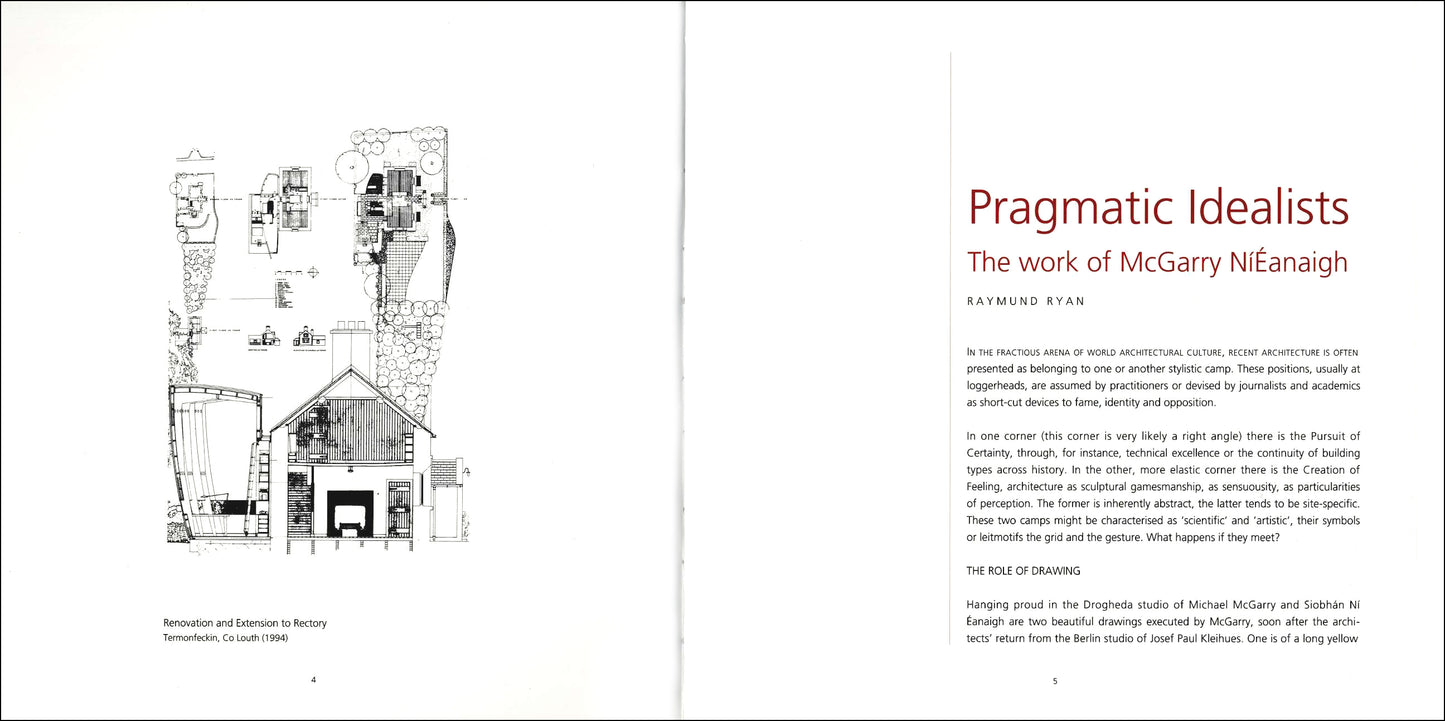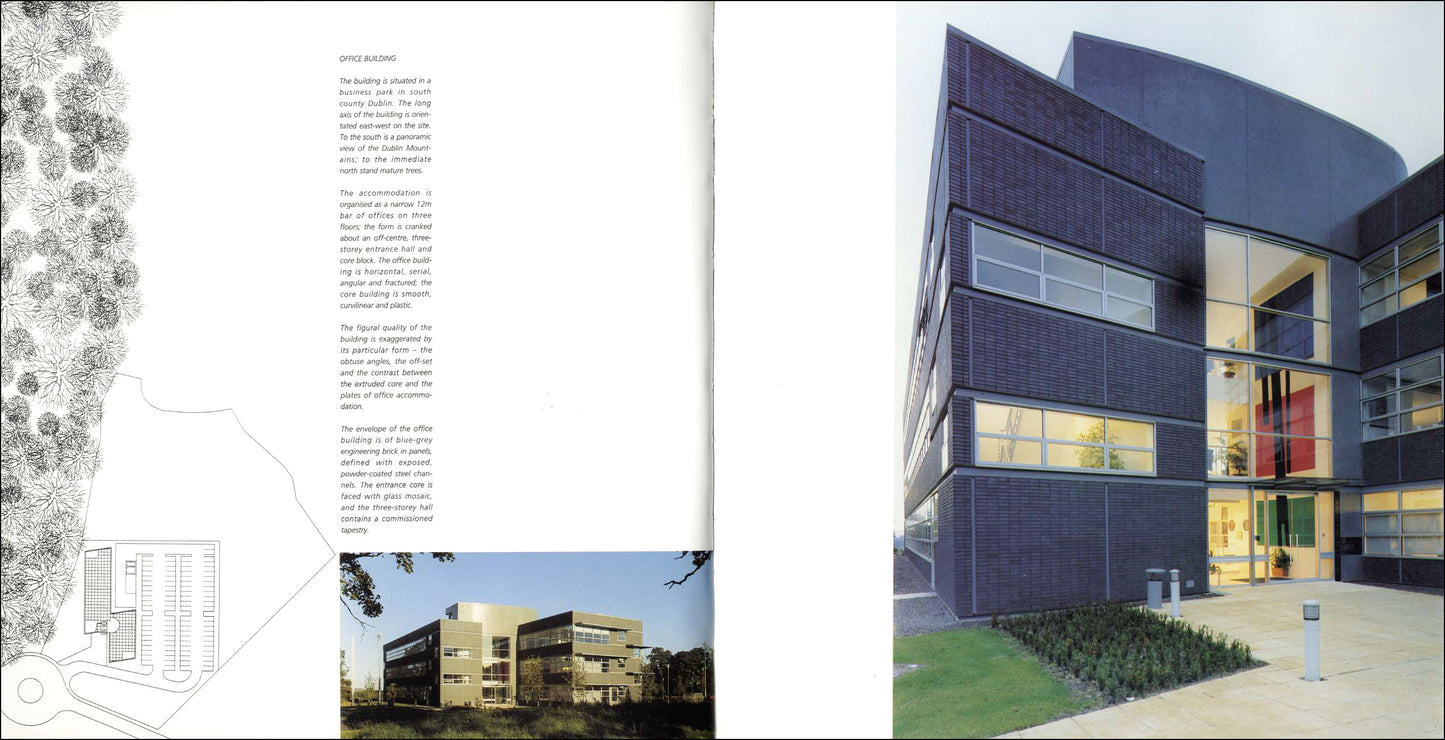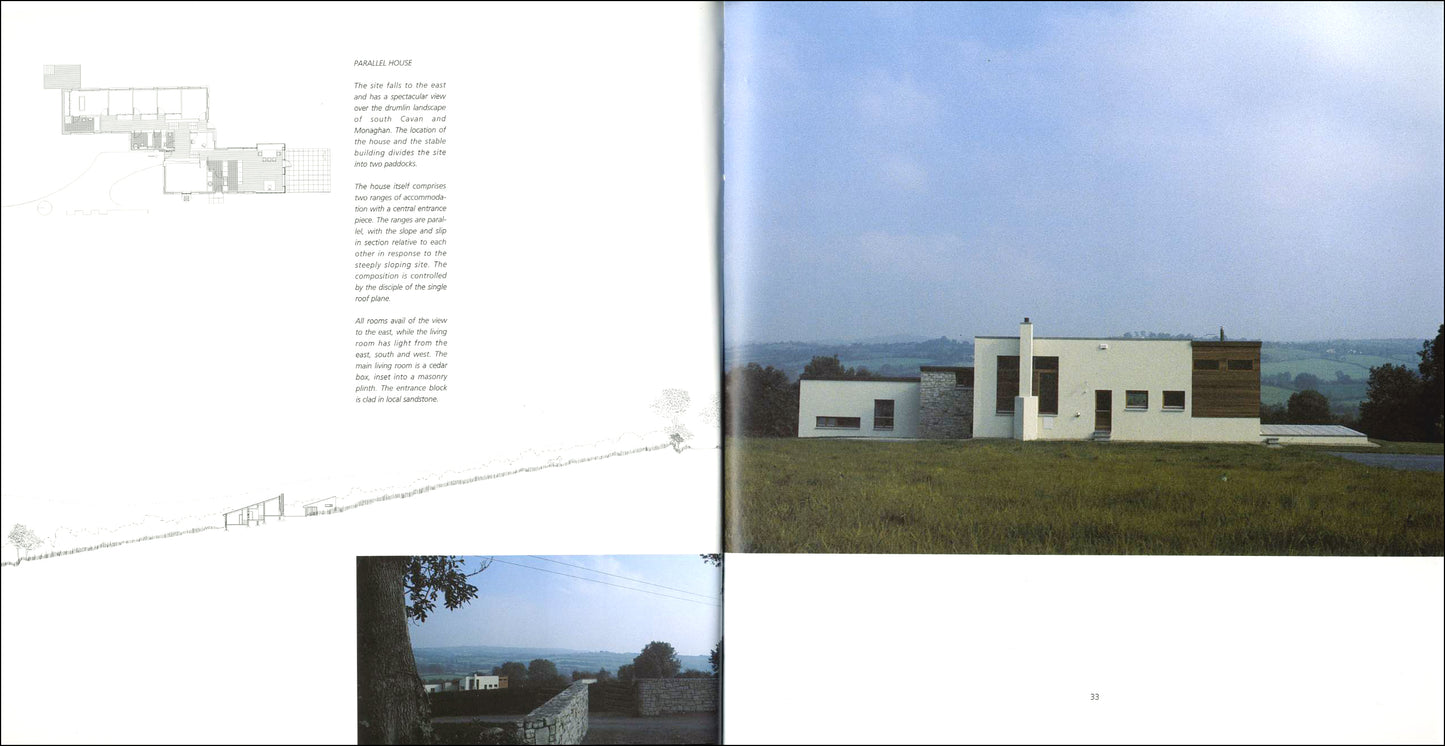Gandon
Architecture Profile °2 – McGARRY NíÉANAIGH
Architecture Profile °2 – McGARRY NíÉANAIGH
Couldn't load pickup availability
Share
essay by Raymund Ryan; interview by Dermot Boyd
ISBN 978 0946641 994 48pp (pb) 22.5 x 22.5 cm 56 illus (incl 26 col)
"In the fractious arena of world architectural culture, recent architecture is often presented as belonging to one or another stylistic camp. These positions, usually at loggerheads, are assumed by practitioners or devised by journalists and academics as short-cut devices to fame, identity and opposition. In one corner (this corner is very likely a right angle) there is the Pursuit of Certainty, through, for instance, technical excellence or the continuity of building types across history. In the other, more elastic corner there is the Creation of Feeling, architecture as sculptural gamesmanship, as sensuousity, as particularities of perception. The former is inherently abstract, the latter tends to be site-specific. These two camps might be characterised as ‘scientific’ and ‘artistic’, their symbols or leitmotifs the grid and the gesture. What happens if they meet?
Hanging proud in the Drogheda studio of Michael McGarry and Siobhán Ní Éanaigh are two beautiful drawings executed by McGarry, soon after the architects’ return from the Berlin studio of Josef Paul Kleihues. One is of a long yellow ribbon, an oblique projection of a dense but gently curving bar of apartments proposed for Dublin’s Grand Canal Basin. The other is a kind of still-life with three components: the apartments, smaller now, acting as a backdrop to an isolated cylinder and a single cube. The cylinder represents the now-demolished Gasometer, an industrial urban landmark; the cube, a type of free-standing palazzo, a monument in a new public place for the city. The drawings are highly idealised. Like specimens in a forensic experiment, the buildings’ surfaces have been carefully exposed. Each line has been considered as if a mechanical suture on a precious skin. These forms exist as pure autonomous objects; an Italian critic might label them ‘metaphysical’. But it is the geometrically impure yellow terrace which retains attention. Less fixed than the more obviously architectonic objects it foregrounds, it is split by an axial vector from the Gasometer. By bending and deforming, this traditional Dublin type (think of inner-city Georgian models, or of Victorian examples such as Sorrento Terrace) is more than just an edge or a rigid barrier. It seems to generate energy and space."
— from the essay by Ray Ryan
"Michael – When I arrived in first year, I had no idea what I had fallen into. Shane de Blacam was an enormous influence.
Siobhan – The concepts of idea and form are the two main things I would associate with Shane’s teaching. The whole Kahn thing about plan and materials got to us very strongly, the plan being the carrier for architecture.
Michael – The exposure to the American work ethic was devastating. We were in a postgraduate year, and the level of competition between students was intense. We weren’t really prepared for it, but the whole American experience of landscape and the generosity of American life was very significant. There’s an essential positivism in American culture which I very much liked.
Siobhan – After graduating from UCD, Shane de Blacam asked me to work in de Blacam and Meagher. It opened my eyes – how you get from the idea, the drawing, to the built piece.
Michael – I went to London to work for Richard Rogers. What fascinated me was the business of detailing and making things. The value of the office was not about being high-tech, but a discipline about how you get things made.
Siobhan – Kleihues’s real strength is about assembling form rather than space, and, yes, his precision.
Michael – It was a great chance to go at a time when Post-Modernism was rampant elsewhere. It was a good antidote to the prevailing culture of the time. I still enjoy a lot of his earlier work. The discipline of dimension, geometry, form... that it really does matter if something is 10mm, plus or minus."
—the architects in conversation with Dermot Boyd
|
CONTENTS Pragmatic Idealists: The work of McGarry NíÉanaigh by Raymund Ryan 4-10 An Architecture of Shadows interview by Dermot Boyd 11-16 Architects’ Biographies 44-45 FEATURED BUILDINGS and PROJECTS |








